Split is a very scenic city lying on the eastern shore of the Adriatic Sea. With just under 200,000 residents, this ancient city is the largest on the Dalmatian Coast and Croatia’s second largest city. Its rulers have included the Greeks, Romans and Turks, with each culture leaving its stamp on the city.
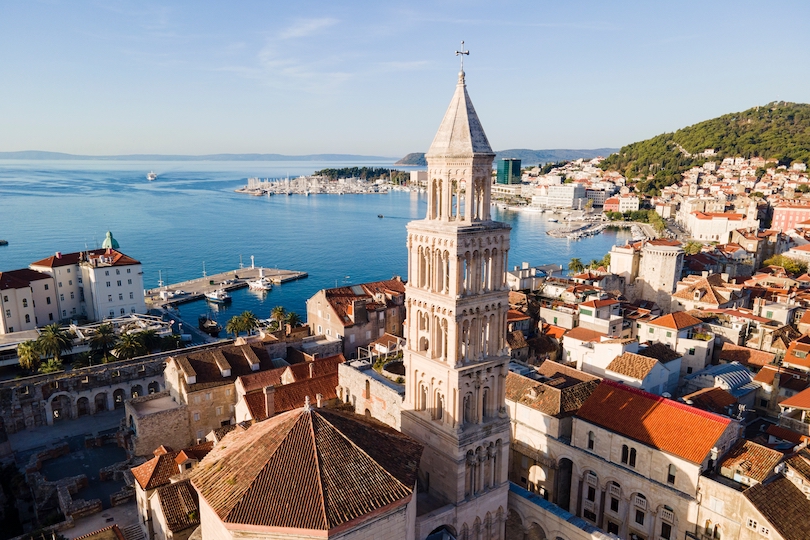
Split is especially famous for its beaches and Roman ruins, particularly Diocletian’s Palace, which lies in the heart of Split’s Old Town. Discovering the many treasure inside the palace is one of he most popular things to do in Split. With an abundance of history, Game of Thrones landmarks and many other attractions in Split, it won’t take long for visitors to figure out why this Croatian city is one of the fastest growing tourist destinations in the Mediterranean.
16. People’s Square
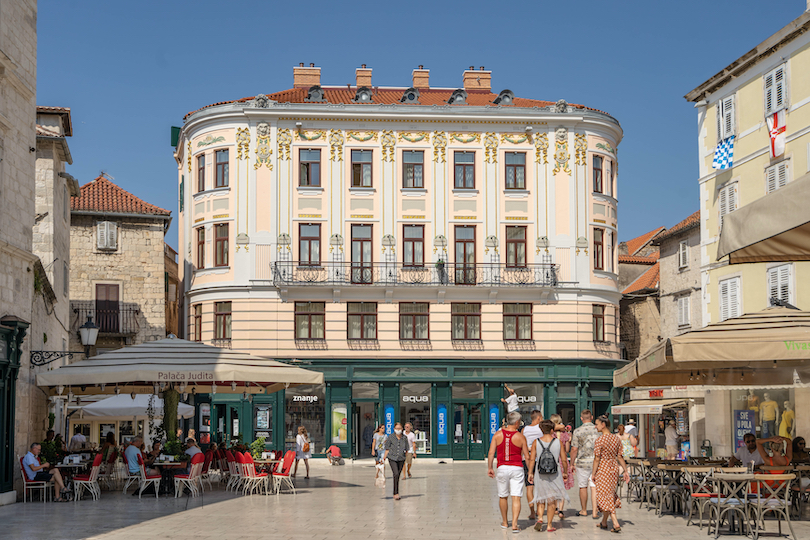
Formerly named St Lawrence’s Square, People’s Square is locally known as Pjaca. It represents the civic power of Split, earning its common name. The piazza is located on the western walls of the Diocletian Palace, and it can be accessed through the Iron Gate. The Gothic-style historic Town Hall is now an Ethnographic museum which hosts many exhibitions in the summer months.
The square is overlooked by a Romanesque clock. Remarkably, it uses 24 digits instead of 12. Life never pauses here. Featuring dainty cafeterias, it became the social hub for intellectuals and artists during the first half of the 20th century. Pjaca remains the buzzing central spot, as it is filled with places to rest, meet, and eat.
15. Archaeological Museum Split
Split’s Archaeological Museum is the oldest museum institution in Croatia. Founded in 1820, it includes 150,000 archaeological artifacts from the prehistoric, Roman, Greek, early Christian and Medieval ages. The museum is situated north of the town center, but they also have branches in Solin and on the island of Vis. The museum’s original function was to care for the monuments of the ancient palace of Salona and Diocletian, providing a rigorous framework for their preservation.
The stone-walled lapidarium strikingly contrasts with the tranquil, leafy courtyard. A two-story building with a museum library, the grand exhibition hall is reserved for smaller artifacts which are displayed in glass cases. The museum is closed on Sundays.
14. Game of Thrones Museum Split
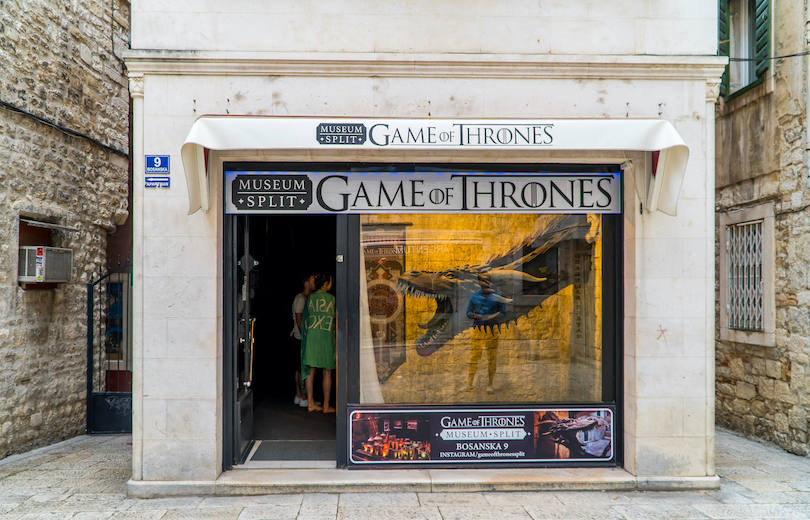
Many Croatian sites became Westeros when filming Game of Thrones, including the Old Town of Split. To celebrate the HBO Series, a commercial museum has opened at the top of Bosanka Street, in the heart of the Roman-walled city. It showcases costumes, authentic props, weapons and real-size wax figures. It also exhibits exclusive photographs taken of the cast and crew during filming. Visitors can also explore the depths of Diocletian Cellars which are close by. They featured as Khaleesi’s dragon dungeon in the series.
It embraces a sensual experience: aromas of Cedar, Jasmine, Lavender and Ether oils permeate the rooms. The dark interior walls add to the mysterious, macabre atmosphere. It is highly recommended to visit during the siesta closure hours.
13. Green Market
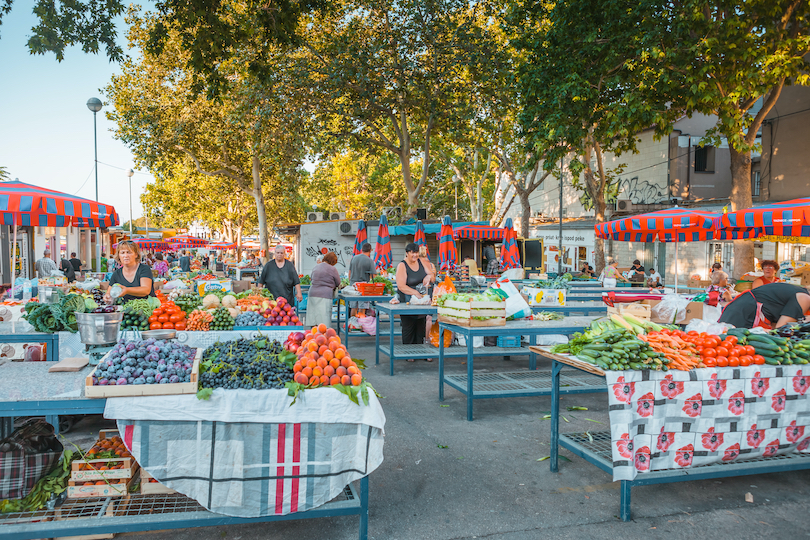
The Pzar (the Central Green Market) is where people come to shop and experience the colors, aromas and flavors of Split. You can find every kind of fresh produce that you would like to purchase: herbs, cheeses, meats, honey and Croatian delicacies, all of which are staples of the Mediterranean diet. Artisanal stalls of souvenirs and trinkets can also be found here.
The market is open every day from 6.30 am but local fruit and vegetable stalls clear out by lunchtime. Saturday is the busiest day to shop; you will find large crowds haggling. The Croatian phrases ‘koliko košta’ (how much does it cost?) and ‘Hvala’ (thank you) may serve you when grocery shopping. Feel like one of the locals and venture into the colorful outdoor market.
12. Putalj Winery
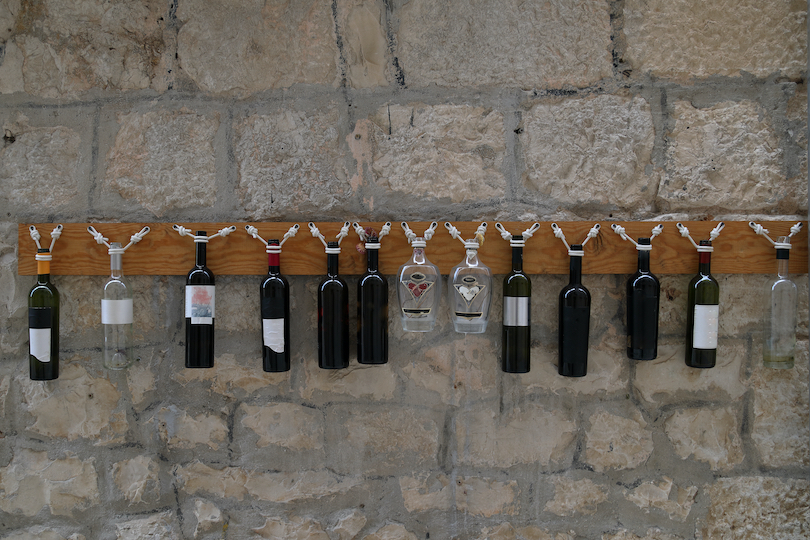
The Putalj Winery is located in Kaštel Sućurac, north of Split. With a backdrop of stunning, picturesque mountain views, you can enjoy Mediterranean delicacies here.
It is one of the leading boutique wineries in Split which creates individual wine tasting programs that are catered to your unique desires and requirements. Tours run once a day around 6 pm. You will be shown around all the production spots, as well as taste vintage wines directly from the fermentation tanks.
The Putalj Zinfandel, a bottle of a medium-bodied wine with aromas of sour cherry, vanilla and spice, will be sampled. There will be a chance to sample olive oil produced by the winery which is paired with appetizing, rustic antipasti. Coach transfers from Split are included in the ticket price.
11. Froggyland
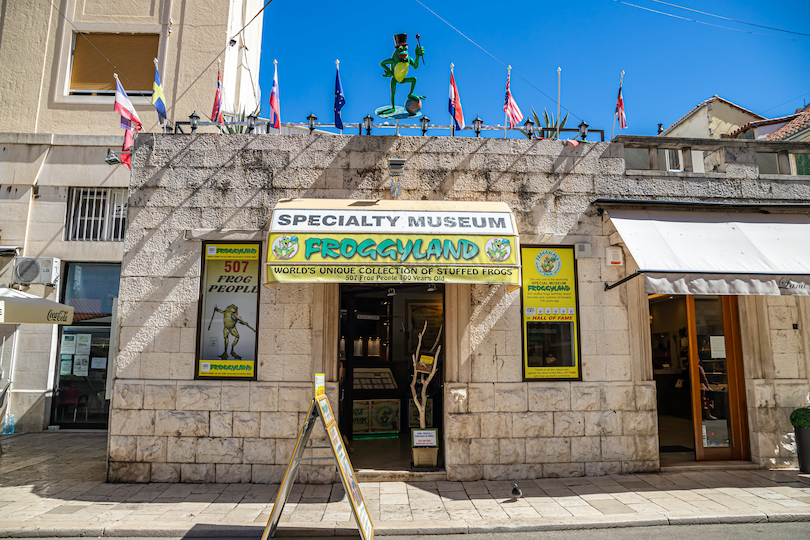
Froggyland is an unusual museum of frog people. Ferenc Mere was an incredibly skilled taxidermist, spending 10 years catching and stuffing frogs to replicate human scenes. This Croatian diorama is a strange and unique space, a place for self-reflection in the literal sense: you can observe frogs performing your daily tasks and social endeavors.
For instance, the anthropomorphic amphibians freakishly toast at a dinner party, smoking cigarettes around a table. You are even transported back to your school days as you witness frogs diligently taking notes in front of a whiteboard. Photography is not permitted in the museum. An eccentric but remarkable place, these exhibits are not one to miss if you are a fan of the strange and niche.
10. Klis Fortress
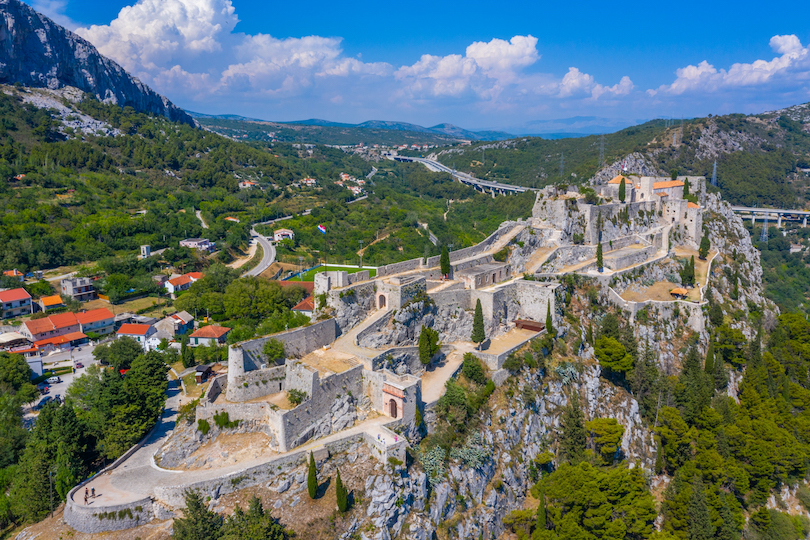
For a chance to step back in time and to admire GOT’s Meereen, Klis Fortress is strongly recommended. Situated above the homonymous village, it is an impenetrable wall of a mountain with three long rectangular defensive stone walls. The fortress dominates the skyline – the structure is irregular as it was designed to fit within the natural topography.
It was historically a royal castle that was the seat of many Croatian kings, but it developed into a successful and colossal defense mechanism during the Ottoman wars in Europe, withstanding 2000 years of history of conquest. From this skyline, you can view Split’s cityscape, its harbor and the surrounding countryside. Included in the ticket price are visits to two other important locations, the Interpretation Center and ethno-agro park in Split.
9. Trip to Trogir
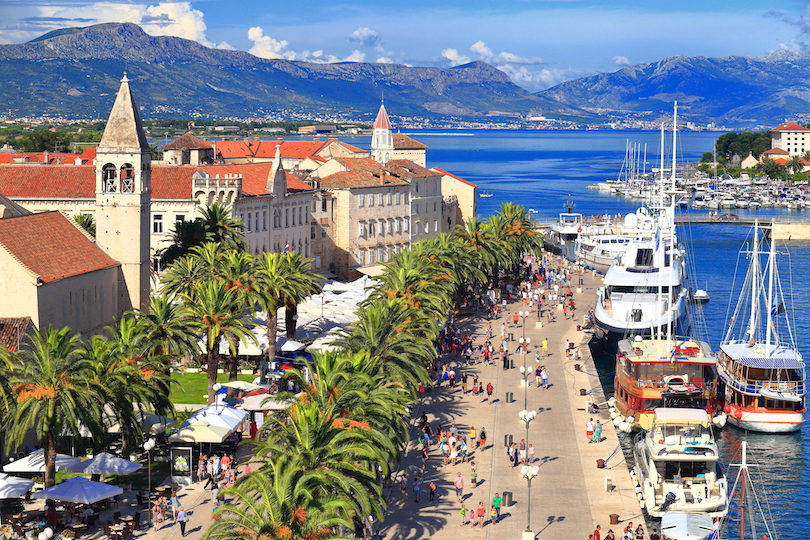
West of Split is the charming medieval town of Trogir. Dating back to the 3rd Century BC, the town is linked by bridges to both the mainland and the lush Čiovo Island. Home to Renaissance facades, medieval streets, elegant churches and palaces, it is now a UNESCO World Heritage Site. St Lawrence’s Cathedral is a must-visit monument, a three-nave Venetian religious site.
The cathedral features three different architectural styles, taking four centuries to build. In the summer, everyone gravitates toward Medena Beach, a seaside promenade lined with bars, cafes and yachts. To arrive there, there is a frequent city bus from Split’s main bus terminal. With picturesque piazzas overflowing with beautiful flowers and plants, Trogir is a town that must not be missed.
8. Fruit Square
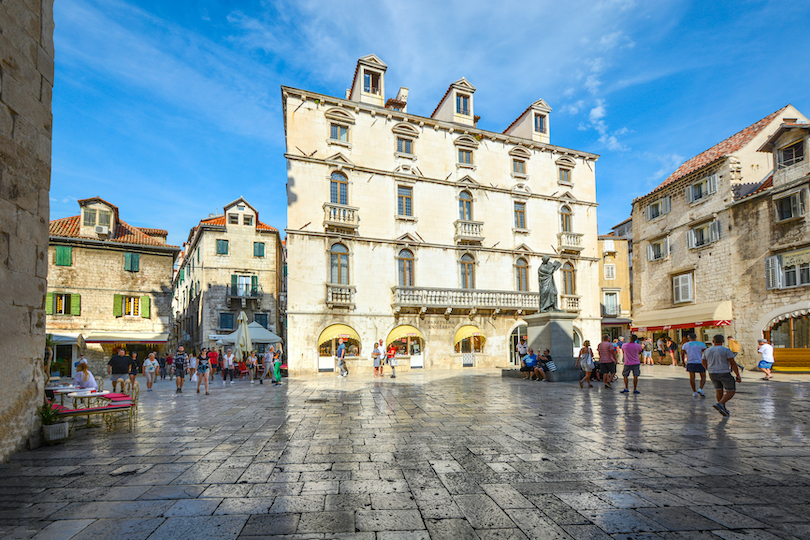
The square of Trg Braće Radić was once home to a bustling fruit market and so received its unofficial name. These days fruit is no longer sold here, but there are several shops and attractions, including the Venetian Castello and tower, both of which were constructed in 1435 to protect the city from local revolts and Turkish raids.
The northern side of the square is dominated by the Milesi Palace, one of the best examples of Baroque architecture in Dalmatia. A statue of Marko Marulić, a 15th-century poet, stands in front of the palace. The statue was created by Ivan Meštrović.
7. Marjan Hill
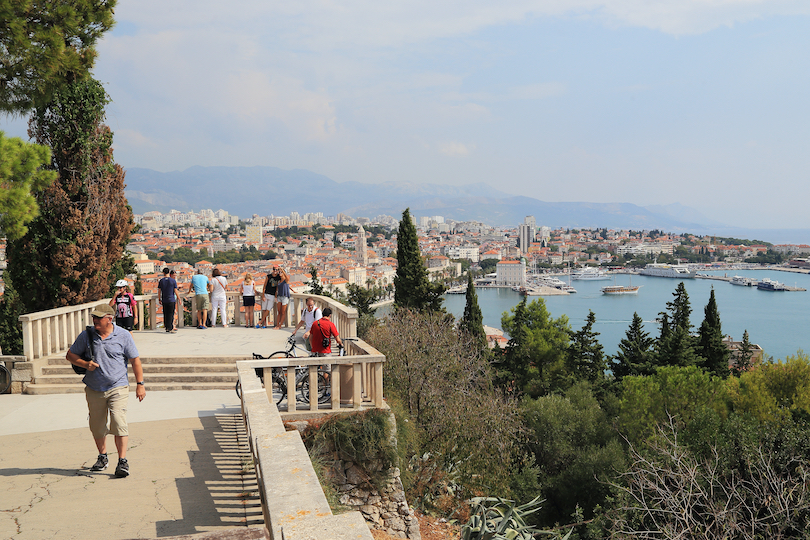
Marjan Hill sits in a forest park at the west end of the Split Peninsula. Approximately the size of New York City’s Central Park, Marjan Hill is covered in Mediterranean pine. The park offers wide paved paths just made for strolling or biking.
Those who make the climb to the top of Marjan Hill will be rewarded with panoramic views of Split and the Adriatic Sea. On the way to the top, visitors will find a small 13th century church dedicated to St. Nicholas, the fisherman’s saint. Marjan Hill has been a favorite escape from city life for Split residents since the third century.
6. Ivan Mestrovic Gallery
Artist and sculptor, Ivan Meštrović bought a plot of land on Marjan Hill in the 1920s transforming it himself into a grand villa: a home, working and exhibition space. In 1952, he gave the building and 132 pieces of his art to the state, founding the art gallery. This particular gallery has had a unique history as a home and a place of wreckage during the war of Croatian independence. A treasure trove of impressive and intimate depictions of close family members, it reopened in 1998 with a new permanent collection.
The stellar art museum is cocooned by a Mediterranean garden, which houses the bronze sculptures, and boasts incredible views of the sea and central Dalmatian islands.
5. Bacvice Beach

A picturesque sandy bay, Bačvice Beach is near the port and only a 15-minute walk east of Diocletian’s Palace. Covering a wide stretch of sea, its waters are transparent and turquoise in color. It attracts large crowds in the summer months, but that should not deter you from enjoying this beautiful part of the Adriatic sea.
Challenge friends or family to a game of picigin (the aim is to keep a small ball from dropping in the water) or enjoy a cold beer al fresco at a beach bar, basking in the summer sun. Having recently been awarded Blue Flag status for its cleanliness and abundant facilities, this beach is a symbol of the city’s wonderful tourism.
4. Grgur Ninski Statue
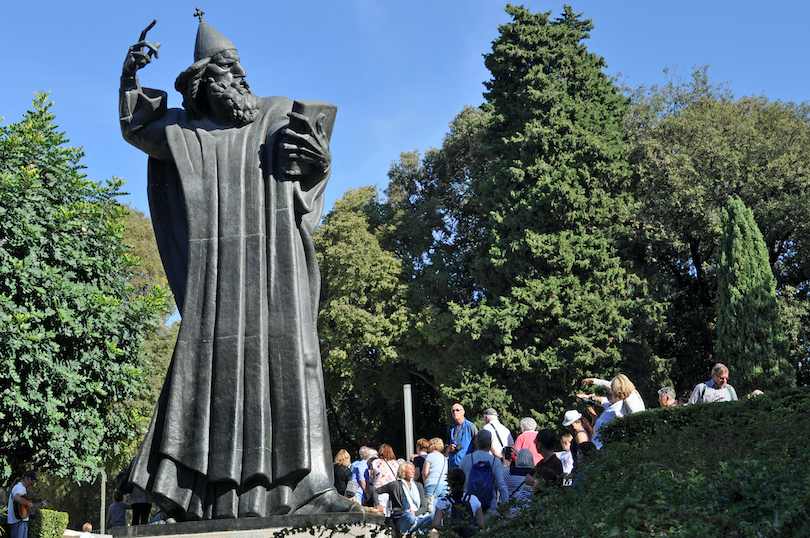
Grgur Ninski, or Gregory of Nin, was a 10th century medieval bishop who defied the pope in several areas. As an advocate for the Croatian language and culture, he switched from holding masses in Latin, a language people did not understand, to Croatian. Though it strengthened Christianity in Croatia, the move resulted in Grgur Ninski losing his bishopric.
His statue can be found north of Diocletian’s Palace in Old Split. One of the most popular tourist attractions in Split, people come here to rub the statue’s toe; doing this is said to bring good luck to the person rubbing it.
3. Riva
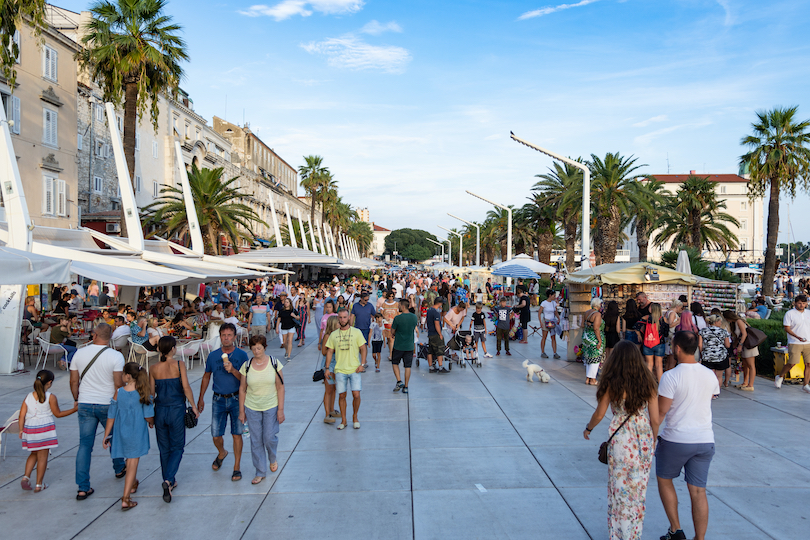
A light breeze, sunshine on the skin, and the clear, deep blues of the sea: this is the essence of the Riva Waterfront. Glazed white tiles and palm trees now run the length of the Old Town. Cruise ships dock at Split Riva Pier, a vital part of Split’s port city existence which is tied to the Adriatic Sea.
There are plenty of benches to sit at and ponder and to also admire the view. Restaurants and cafes are dotted all along the Riva. A pedestrian promenade, it is an ideal place for having a morning coffee, or an evening out for drinks after watching the sunset. At night, the energy transforms as seafood dishes are served in abundance with views of the water.
2. Saint Dujam
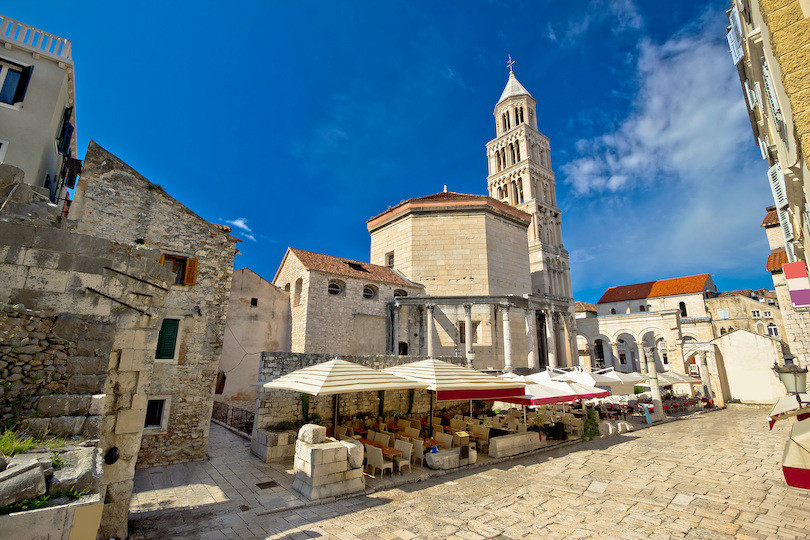
Saint Dujam, known formally as the Cathedral of Saint Dominus, has at least one claim to fame. Since it was consecrated in the 7th century, it is the oldest Catholic cathedral in the world that has been in continuous use in its original structure without undergoing a major restoration. The cathedral has three parts: the mausoleum of Emperor Diocletian built in 305 AD; a Romanesque bell tower that was added in 1100, and a chorus that was built in the 17th century.
The bell tower provides great panoramic views of Split, nearby islands and Marjan hill. The wooden doors, created in the 13th century, show scenes from the life of Christ.
1. Diocletian’s Palace

The massive Diocletian Palace was built by Diocletian, the only Roman emperor to abdicate the throne voluntarily. He had the palace built on the Bay of Aspalathos near his birthplace, and after his abdication on May 1, 305 A.D., he lived in it for the rest of his years. His palace went on to become the core of the modern day city of Split. As the world’s most complete remains of a Roman palace, it holds an outstanding place in Mediterranean heritage.
Emperor Diocletian wanted only the best for his retirement home. He used marble from Greece and Italy, as well as sphinxes and columns from Egypt. Water came to the palace from the Jadro River through a Roman aqueduct. Visitors can view the remains of this aqueduct, which was restored in the 19th century. The palace served as an imperial home, a fortified town and a military fortress to protect those inside. It had reinforced gates on the eastern, western and northern sides. The southern side, which faced the sea, had a smaller gate that led from the residential quarters to the sea.
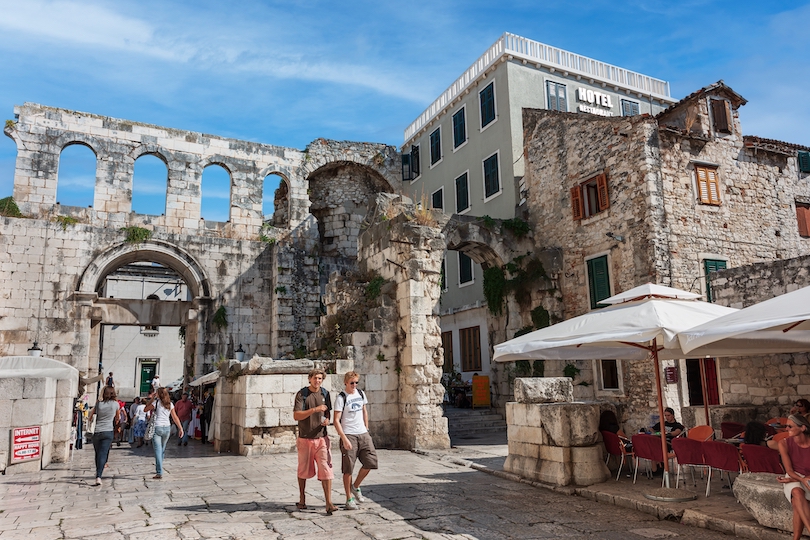
In the sixth century, 300 years after it was built, the palace fell into disuse. However, around the year 614 A.D., refugees from nearby Salona (Solin) took up residence in the palace to escape the invading barbarians, and the locals have been living there ever since. It is a living treasure, with nearly 3000 people making their homes there, buying food at the market, taking their children for walks and hanging their laundry out to dry on ancient balconies.
Visitors do not need a ticket to enter the palace. They can stroll right in. The Bronze Gate gives access to the basement of Diocletian’s old Central Hall, now filled with craft and souvenir shops. Moving about in the palace is easy, and travelers can enjoy the many museums, the National Theater and the old churches found there. They might even meet a local artist or have an espresso at one of the many shops within the palace.
Best Time to Visit Split

As average temperatures soar to 25 to 28°C (77 to 82°F), the water is warmest and people have holidays, June to September is by far the most popular time to visit Split. This though is when its promenade, beaches and historic sights are at their busiest. Hotel prices are also high.
People aren’t put off, however, as this is the best time to swim in the sea or enjoy sailing and watersports. The Split Summer Festival and Ultra Europe Festival also take place then and a lively atmosphere reigns over everything.
If you want to avoid the crowds, the shoulder seasons of spring and autumn – so April, May and October – are arguably even better. Temperatures remain around 16 to 21°C (61 to 70°F) with swimming still possible in those last two months. Boat trips out to Hvar or visits to Krka National Park are much calmer, pleasant affairs during this period.
Winter is quite cool and rainy with most people staying away until Easter when the numbers start to pick up again. Although you can find some fantastic deals, the climate isn’t great for enjoying outdoor activities and exploring its incredible coast and islands.

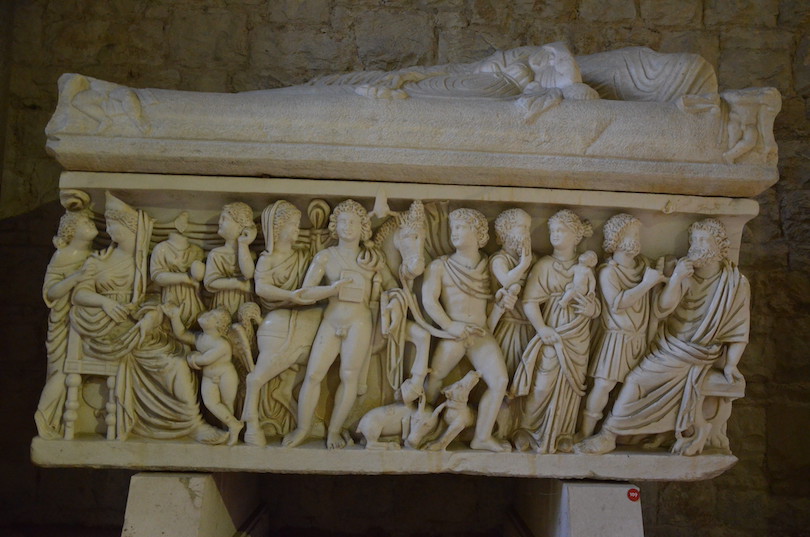
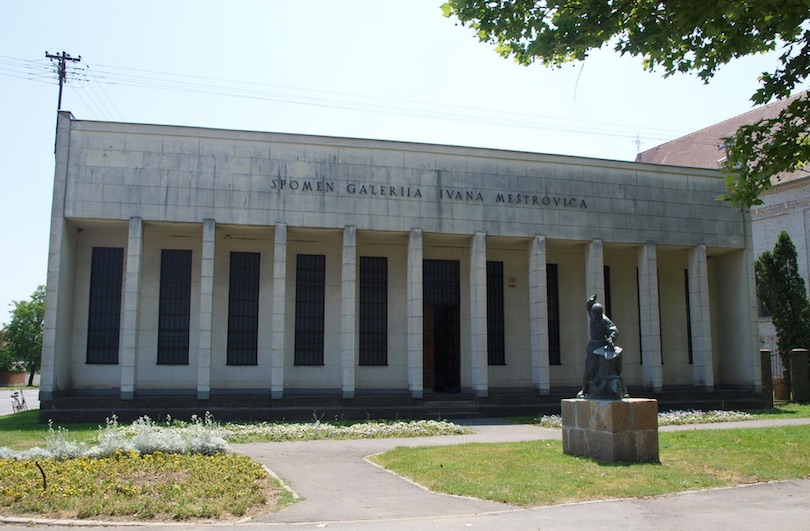
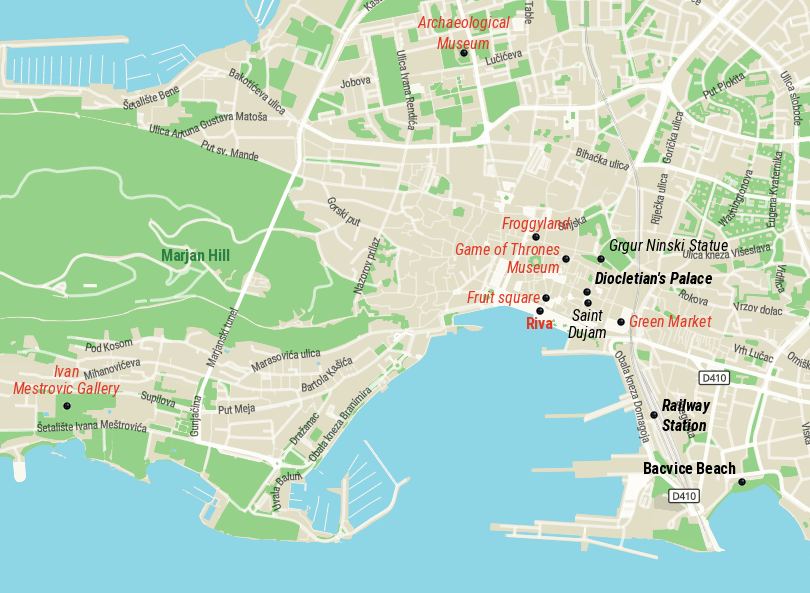
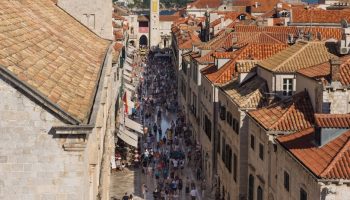
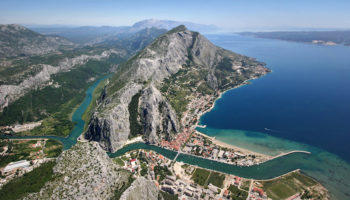
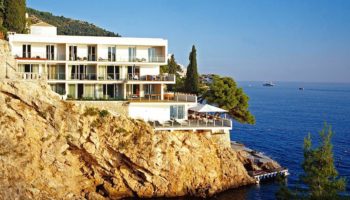
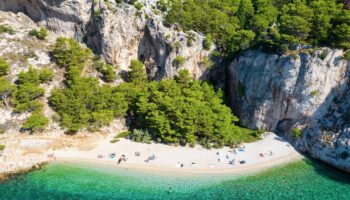
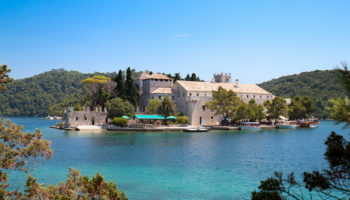

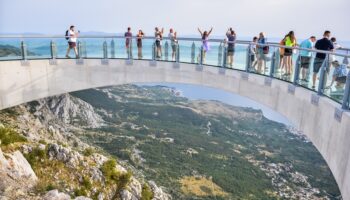
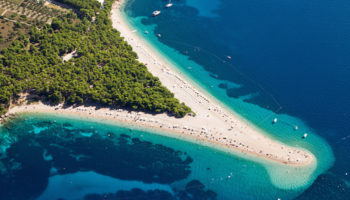
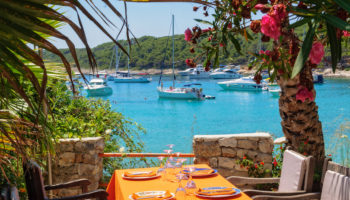
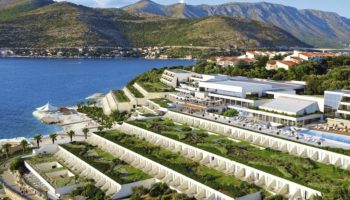
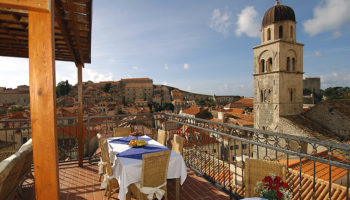
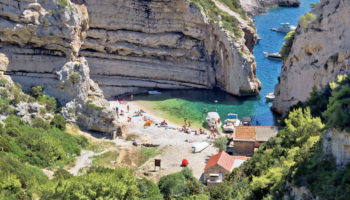
Leave a Reply